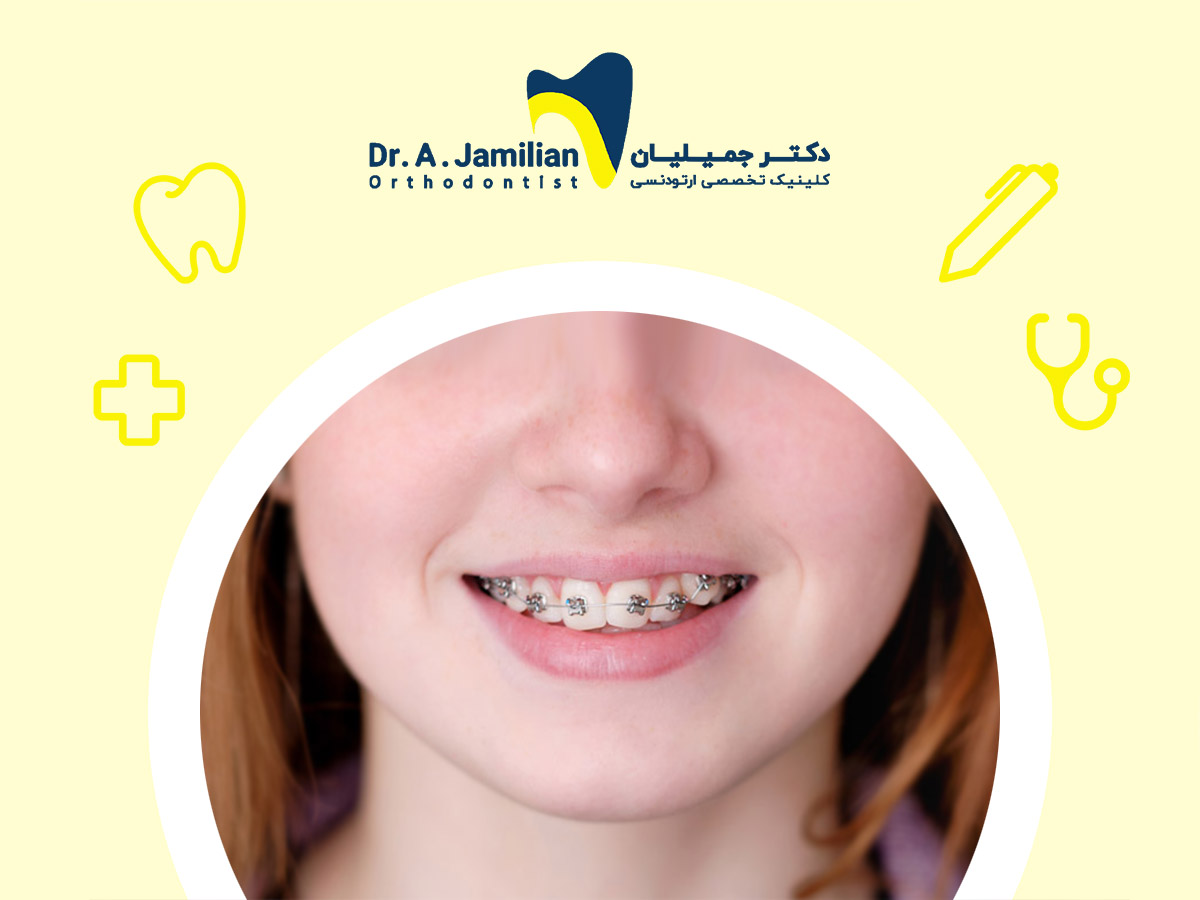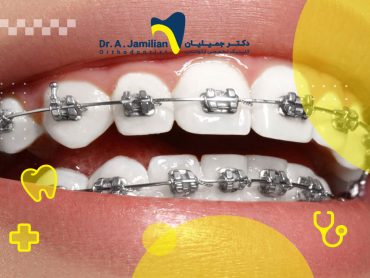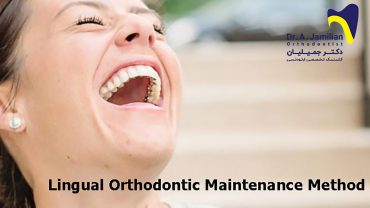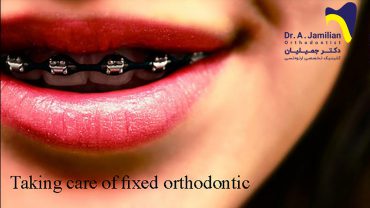Fixed orthodontics means that the patient cannot remove the orthodontic appliance. In fixed orthodontics, the jewel-like components called brackets are attached and fixed to the tooth. Unlike removable orthodontics, fixed orthodontics does not depend on patient cooperation.
The treatment by fixed orthodontics lasts 2 years on average, which may be continued according to the malformation type and severity. No solid foods should be eaten during the course of fixed orthodontics such as scorched rice, corn, seeded fruits, and olives. Otherwise, the bracket is detached from the tooth and should be replaced with a new one, resulting in prolonged treatment and tooth damage. During this period, patients need special care to prevent tooth discoloration and decay.
Fixed orthodontics process
In fixed orthodontic treatments, teeth can be moved around 1 mm per month, which is not sensible during the treatment period. In some cases, a tooth may be extracted based on the malformation type. In these scenarios, their teeth are moved towards empty spaces, and tooth movement is well visible in the first few sessions. The patient should be visited for treatment once a month. At each session after activating the elastic bands, wires, or springs, the patient may feel some pain that gradually decreases in the first week. Occasionally during the examination sessions, a part of the wire may be moved out of the end of the teeth due to tooth movement, causing the patient to feel an irritating sharpness. If this happens, an emergency visit should be scheduled as soon as possible to shorten the wire end.

Fixed orthodontics objective
Fixed orthodontics aims at moving the teeth to the right space, adjusting the crowded teeth, and improving the relationships between teeth. In fixed orthodontics, the brackets are attached to the teeth and a wire is passed through the brackets. After this, very delicate elastic bands are hooked to the brackets. These white or colored elastic bands are replaced in each session however, the wires may not be replaced.
Tooth extraction in fixed orthodontics
In some cases, a tooth should be extracted based on the type and severity of malformation and age. The teeth can be of any type, usually the maxillary and mandibular premolars. As a rule, canines should never be extracted, even if they are completely exposed or impacted. However, if the impacted tooth is in a position that cannot be moved it will get extracted. Premolars are often extracted and the canines are placed in the proper space. Depending on the circumstances, a mandibular anterior incisor may be extracted occasionally. Dental gaps can be filled by correcting the crowded teeth or by retracting the maxillary or mandibular anterior teeth.
The gaps caused by tooth extraction are filled through the movement of other teeth, and the patient will have no problem with the space between the teeth. Patients are usually concerned that the space of the extracted teeth will be left empty, but this is irrelevant if a tooth extraction is correctly ordered. As a result of orthodontics and teeth movement, the space may be considered for the growth of the third molars or wisdom teeth. Extraction of wisdom teeth doesn’t lead to the arrangement of the anterior teeth. He space of wisdom teeth cannot be used to align the canines or anterior teeth.
Best time for fixed orthodontics
Teeth can be moved through fixed orthodontics at any age provided that the teeth and gums are healthy. However, the rate of tooth movement slightly decreases with aging. As a general rule, patients are recommended to be treated before puberty to use the opportunity of jaw development to correct abnormalities.

Who is a fixed orthodontist?
Due to complexity, the need for more sophisticated work, and long-term treatment, fixed orthodontics is not taught in general dentistry. It’s only taught in the specialty course of orthodontics. Therefore, patients should only refer to the best orthodontists for treatment with fixed orthodontics.
Orthodontics deal with the treatment of improper relationships of jaws and the alignment of irregular teeth. Prevention and treatment are diagnosed by general dentists and in more complex cases by orthodontists. There are two orthodontic treatments: namely fixed and removable orthodontics. Compared with removable orthodontics, fixed orthodontics is performed in more complex malformations, by attaching orthodontic brackets and wire to the teeth and fixing them in the mouth.
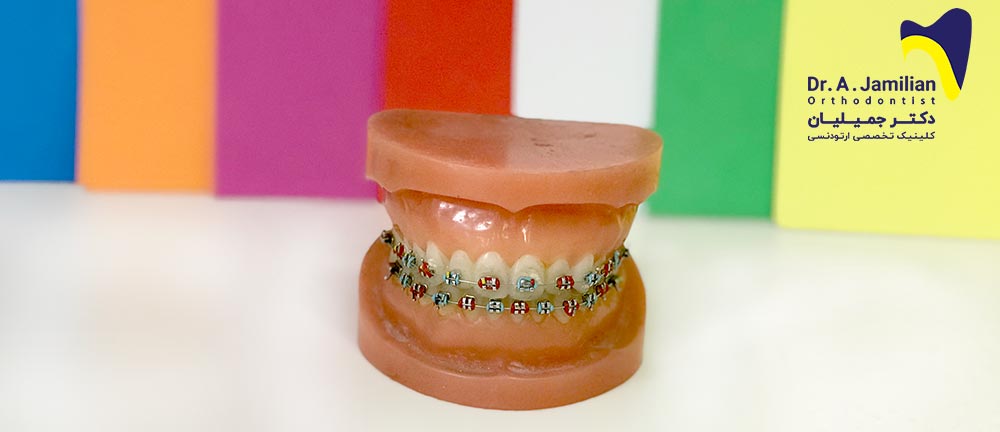
Highlights of fixed orthodontic treatment
The duration of fixed orthodontic treatment varies from about 12 months to 3 years depending on the type of malformation and possibly even longer in certain jaw problems. The following should be considered when treating patients with fixed orthodontics.
- Cooperation and regular visits of patients are required to activate orthodontic wires and brackets.
- Talking and eating may be difficult for the first few days after fixing the wire in the mouth, but you will get used to it over time.
- Use soft foods for a few days after the installation of brackets.
- Steer clear of eating colored foods such as sauce, herbs, soft drinks, tea, and coffee in the first few days.
- Avoid chewing gum and eating solid and sticky foods such as scorched rice and gum to prevent breaking and tilting of orthodontic wires.
- Do not break nuts like seeds and almonds.
- To prevent food stuck and tooth decay, fixed orthodontic brackets and wires should be cleaned with special toothbrushes to prevent teeth odor and discoloration.
- Protect orthodontic wires during heavy exercise and workouts (which may be associated with head and face trauma) and swimming, use a retainer if possible.
- In case of detachment or loosening of brackets, refer to the office immediately.
Fixed Orthodontics FAQ
The best age for starting orthodontics treatment is between 8 to 12 years old. However, there is no age limit for starting the fixed orthodontics treatment and the orthodontics treatment candidate can benefit from orthodontics appliances at any age.
Based on the type of malocclusion, the orthodontist decides which appliance should be suggested to the patient. Therefore, according to the type of malocclusion and the patient’s living condition, the orthodontist proposes the best orthodontics appliance.
No, the teeth must be straightened by the orthodontist first, then, you can place dental implants. So, standard teeth implant.
The duration of the treatment with the fixed orthodontics is shorter than other procedures. It varies from 1 to 3 years. After removing the fixed orthodontics brackets, the patient can wear retainers for 6 months. After 6 months, the patient wears the retainer only at night.
This type of orthodontics treatment does not cause any damages to the teeth by itself. However, some patients may experience tooth decay and dental plaque due to the lack of dental hygiene during orthodontics. Therefore, it is recommended that you should practice dental hygiene during your orthodontics and in case of any dental plaque visit your dentist and have it treated before it can cause tooth decay.
